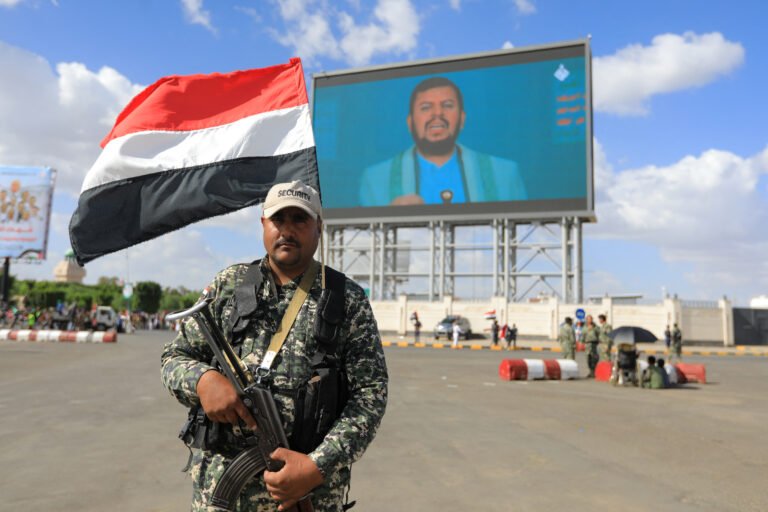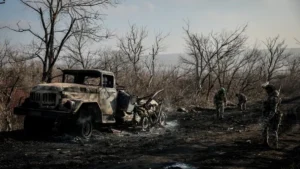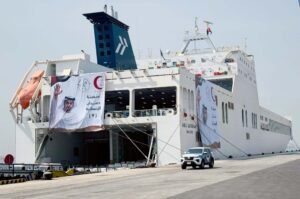Dubai, United Arab Emirates – A new report issued by the Crisis Observatory of the PTOC Yemen Center revealed that the Houthi group no longer deals with elements of Al-Qaeda and ISIS as ideological opponents. Instead, it has turned them into temporary tools that it uses in its military and political project.
Terrorist recycling
According to the report, the Houthis have turned prisons into closed factories to recycle terrorists. They equip them as security and field arms affiliated with the security and intelligence service under their control.
This is in flagrant violation of international laws related to combating terrorism.
The report explained that the Houthi Security and Intelligence Service, led by Abdul Hakim Al-Khaiwani (Abu Al-Karrar), is leading a careful sorting process inside prisons. They aim to identify elements capable of re-employment.
These detainees are given financial privileges and salaries of up to $260 per month, in addition to weapons and protection.
This is in exchange for engaging on the battlefronts in Marib, Al Bayda, Shabwa, Abyan and Hadramaut.
The militias also established secret camps in Saada, Amran, and Dhamar to rehabilitate them militarily and ideologically.
According to the report, the militia resorted to reformulating religious concepts such as “alliance of necessity” and “common enemy.” This was done to justify the assimilation of Al-Qaeda and ISIS elements into its ranks.
This intellectual mobilization was not limited to extremist elements. It also included Houthi fighters who were convinced of the legitimacy of this phased cooperation.
This reflects an attempt to establish an ideological cover for an alliance that contradicts the principles of combating terrorism.
Marketing under the guise of change
The report pointed out the emergence of the so-called “Change and Liberation Movement” in Hadhramaut. This served as a political and ideological cover adopted by the Houthi militia to market its hidden alliances with terrorist groups.
This movement uses a dual discourse, raising slogans of freedom and opposition to foreign interference abroad.
While he works internally to recruit and attract members of Al-Qaeda and ISIS for the benefit of the Houthi project.
Involved leaders
The report revealed, for the first time, by name a network of Houthi leaders involved in the terrorist recycling file. This includes Abdul Qader Al-Shami, Deputy Head of the Security and Intelligence Service and the first person responsible for the detainees’ file.
Abdul Karim Al-Houthi, appointed to the position of Minister of Interior and has the final say in release decisions. Abdullah Yahya Al-Muayyad (Abu Ali Al-Hakim), commander of military intelligence and responsible for redistributing the released elements.
Field names such as Abu Imad Al Marani, Ali Abdullah Al Qasimi, and Abu Muhammad Al Mutahhar also emerged. They played executive roles in rehabilitating and distributing these elements.
The report also revealed secret deals under which dangerous leaders in Al-Qaeda were released.
The most prominent of them is Sami Fadl Abd Rabbuh Dayan, who was involved in the assassination of Major General Salem Qatan. He was recruited for the Houthis and assigned to form cells in Abyan.
Elements involved in the Al-Sabeen Square bombing, who later appeared on the Ma’rib, Al-Jawf and Hadramaut fronts, were also released.
This reflects the extent of the security risk caused by this policy.
secret training camps
Their journey did not stop at prisons. They were transferred to secret training camps before being distributed on the fronts or planted in intelligence cells charged with carrying out assassinations. They were also involved in planting explosive devices and collecting field information.
Government security services have already seized satellite communications devices in the possession of members in Abyan.
This shows the amount of logistical support provided to them.
The report warned that the strategy of “recycling terrorism” opened the door to reviving sleeper cells. It also warned of disrupting the security scene in the liberated governorates.
He stressed that some of the released elements played a direct role in the fall of the districts of Marib, Al-Jawf and Al-Bayda.
Which caused mass waves of displacement and destabilized the region.
At the conclusion of its report, the PTOC Yemen Center called on the international community to include the Houthis’ strategy of “recycling terrorists” among war crimes.
In addition, it suggests establishing an international database of released elements, tightening control over Houthi prisons, and imposing strict penalties on the leaders involved.
He also held Iran and the Revolutionary Guards directly responsible. They are accused of supporting this subversive project that threatens regional and international security.

















